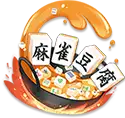Learn about Mahjong Tiles. Types, Quantities, and Tips for Choosing Them
What Are Mahjong Tiles?
Mahjong tiles are small tiles used in the game of mahjong. Typically made from durable plastic or bamboo, each tile is engraved with specific designs or characters. Mahjong, a game originating in China, is now enjoyed worldwide. The types and designs of mahjong tiles reflect deep cultural significance.
This article focuses on the tiles used in Japanese riichi mahjong.
Types and Quantities of Mahjong Tiles
In Japanese riichi mahjong, there are 34 types of tiles, with four copies of each, making a total of 136 tiles.
Mahjong tiles are broadly divided into two categories: suit tiles and honor tiles.
Suit Tiles
Suit tiles, as the name suggests, are numbered tiles. They are divided into three suits: Manzu, Pinzu, and Souzu, each containing numbers from 1 to 9.
Manzu
The following nine types are the Manzu tiles. They are marked with Chinese numerals plus the character "萬" (man). There are four copies of each tile, making a total of 36 tiles. The "萬" character symbolizes units of currency.









Souzu
The following nine types are the Souzu tiles. There are four copies of each tile, making a total of 36 tiles. The Souzu tiles are said to represent strings of coins threaded together. In Chinese culture, money symbolizes good fortune and power.









Incidentally, the bird depicted on the one Sou tile is not a peacock but a sparrow carrying a coin basket.
Pinzu
The following nine types are the Pinzu tiles. They are believed to depict ancient Chinese coins. Like the Manzu and Souzu tiles, the Pinzu suit also originates from monetary symbols.









Honor Tiles
Honor tiles are divided into wind tiles and dragon tiles.
Wind Tiles
The following four types are the wind tiles, also known as the "Four Joy Tiles." Each type has four copies, making a total of 16 tiles. These tiles represent directions.




The wind tiles also have an order: "East" → "South" → "West" → "North" This sequence is essential to the rules, so it’s good to memorize it.
Dragon Tiles
The following three types are the dragon tiles. Each type has four copies, making a total of 12 tiles. It is said that "White" represents white skin, "Green" (發) symbolizes black hair, and "Red" (中) represents a woman’s red lips, embodying elements of a beautiful woman.



The dragon tiles also follow a specific order: "White" → "Green" → "Red"
Red Tiles
Red tiles are special suit tiles with red markings, as shown below. Known as "red dora," holding these tiles during a winning hand increases the score.
Whether or not to use red tiles depends on the rules of the game. When used, one tile each of "5 Man," "5 Sou," and "5 Pin" is replaced with a red dora tile.
Various Names for Mahjong Tiles
The following names are often used when discussing mahjong rules or strategies, so it's helpful to know them.
Terminal Tiles
Terminal tiles refer to the 1 and 9 tiles of each suit.






Yaochu Tiles
Yaochu tiles include the terminal tiles and all honor tiles, making a total of 14 types.













Middle Tiles
Middle tiles refer to the 2 to 8 tiles of each suit.





















Inner Tiles
Inner tiles are a subset of middle tiles, specifically the 3 to 7 tiles.















Tiles Not Used in Japanese Mahjong
While not used in standard Japanese mahjong, tiles like flower tiles and season tiles may appear in certain local rules, so they are introduced here.
Flower Tiles
Flower tiles are additional tiles used in specific rules, featuring designs such as spring, summer, autumn, and winter, or flowers like plum, orchid, chrysanthemum, and bamboo. They are not used in regular mahjong and serve as bonuses in specific games.
Season Tiles
Season tiles are a type of flower tile that depicts the four seasons: spring, summer, autumn, and winter. They are used in Chinese mahjong and some special rules, granting bonus points to the player who draws them.
How to Choose Mahjong Tiles
If you’re considering purchasing mahjong tiles for casual play at home, here are some tips to avoid regretting your choice. While cheap tiles may seem appealing, they can lead to dissatisfaction, so be sure to check the following points:
Size and Weight
The standard size for Japanese mahjong tiles is approximately 26mm in height, 20mm in width, and 16mm in thickness, with a weight of 15g. Choose tiles close to these dimensions. Cheaper tiles tend to be smaller and lighter, which can make them harder to handle.
Choose Urea Resin
Mahjong tiles are generally made from "urea resin" or "acrylic." While acrylic tiles are cheaper, they are not recommended.
First and foremost, acrylic tiles have a strong chemical smell, similar to thinner. This odor can transfer to your hands after just one game. While airing them out for several days may reduce the smell, urea resin tiles are still the better choice. They are also typically more durable and easier to handle.
Don’t Forget a Mahjong Mat
When purchasing a mahjong tile set, items like scoring sticks are usually included, allowing you to start playing immediately. However, don’t forget to get a mahjong mat. This square mat, placed on the table, reduces the clattering sound of tiles and prevents them from slipping. While you can technically play without it, the noise can disturb neighbors, and slippery tiles are challenging to manage, so a mat is highly recommended.






Please send us your comments.